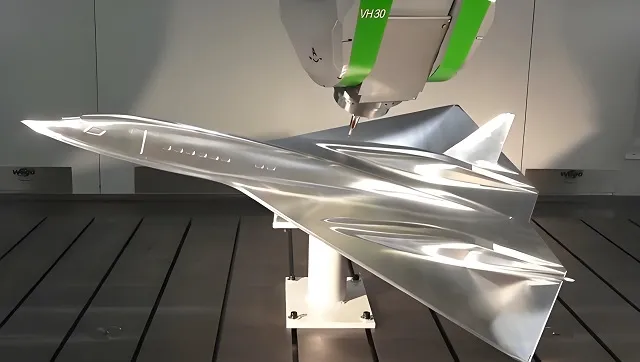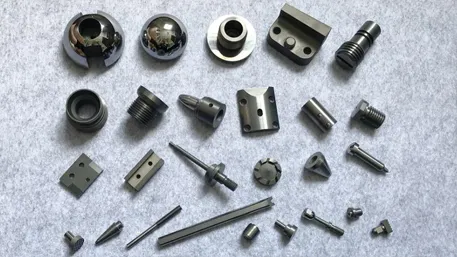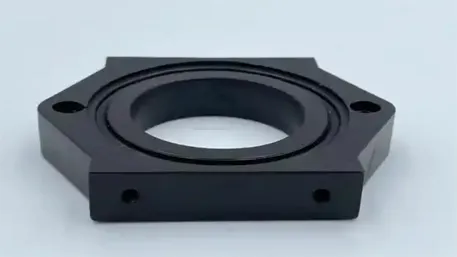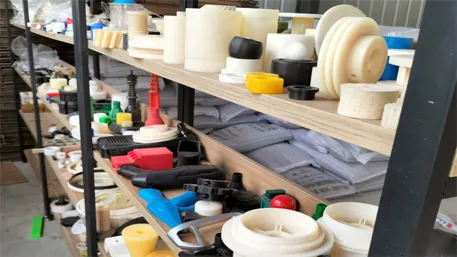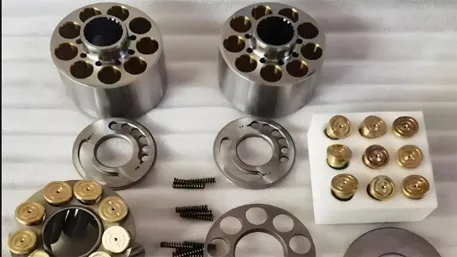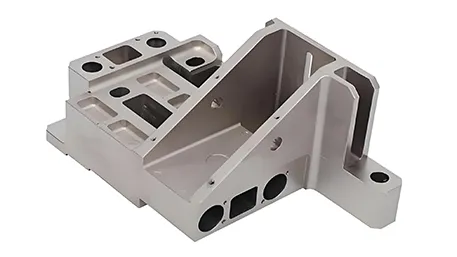Introduction
In the dynamic realm of modern manufacturing, CNC machining and manufacturing have emerged as cornerstones, revolutionizing the way products are designed, prototyped, and produced. From the sleek components of high – end automobiles to the intricate parts in aerospace equipment, the fingerprints of CNC technology are everywhere.
This technology, short for Computer Numerical Control, has transformed the manufacturing landscape by enabling highly precise, repeatable, and efficient production processes. It has not only met the growing demands for complex and high – quality products but has also opened up new possibilities for innovation across a wide range of industries. In this article, we will delve deep into the world of CNC machining and manufacturing, exploring its principles, applications, advantages, and the future it holds.
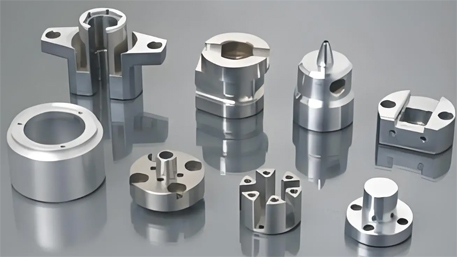
What is CNC Machining and Manufacturing
1. Definition and Basics
CNC machining and manufacturing is a sophisticated manufacturing process that relies on computer – controlled machine tools to shape and form raw materials into finished products. At its core, the computer numerical control (CNC) technology plays a pivotal role. A CNC system operates by reading a set of pre – programmed instructions, typically in the form of G – code. These instructions precisely define the movement of the machine’s axes, the speed of the spindle, the feed rate of the cutting tool, and other crucial parameters.
For example, imagine a block of aluminum that needs to be transformed into a complex component for an aerospace application. The design of the component is first created using computer – aided design (CAD) software. This 3D model is then translated into a set of instructions for the CNC machine using computer – aided manufacturing (CAM) software. The CNC machine reads these instructions and precisely controls the movement of the cutting tools, removing material from the aluminum block layer by layer until the desired shape is achieved. This process ensures that the final product adheres to the exact specifications with a high degree of accuracy, often within micrometers.
2. Key Components and Machinery
CNC Milling Machines: These are one of the most common types of CNC equipment. A CNC milling machine uses a rotating multi – edged cutting tool to remove material from the workpiece. It can perform a wide variety of operations such as face milling, end milling, and contour milling. For instance, in the production of a custom – designed mechanical part with complex geometries like slots, pockets, and curved surfaces, a CNC milling machine can accurately create these features. The machine can move the workpiece in multiple axes (usually three or more, including the X, Y, and Z axes), allowing for the creation of three – dimensional shapes.
CNC Lathes: Also known as turning machines, CNC lathes are used to create cylindrical parts. The workpiece is held and rotated on a spindle while a cutting tool moves along the length or radius of the workpiece to remove material. Operations such as turning, boring, threading, and facing can be carried out on a CNC lathe. For example, in the manufacturing of engine shafts for automobiles, a CNC lathe can precisely turn the raw metal rod into a smooth, accurately dimensioned shaft with threads at the appropriate locations.
CNC Grinding Machines: These machines use an abrasive wheel to remove small amounts of material from the workpiece, achieving a high level of precision and surface finish. CNC grinding machines are crucial in industries where parts require extremely tight tolerances and smooth surfaces, such as in the production of bearings, shafts, and molds. There are different types of CNC grinding machines, including surface grinders for flat surfaces, cylindrical grinders for round workpieces, and internal grinders for machining the inner diameters of holes.
The Advantages of CNC Machining
1. Precision and Accuracy
One of the most remarkable features of CNC machining is its ability to achieve an extremely high level of precision and accuracy. In CNC machining, tolerances can be maintained within micrometers, which is far beyond the capabilities of traditional manual machining methods. This high – precision machining is crucial for industries where even the slightest deviation can lead to catastrophic consequences.
Take the aerospace industry as an example. Components in aircraft engines, such as turbine blades, must be manufactured with extreme precision. These blades operate under high – temperature, high – pressure, and high – rotational – speed conditions. A deviation of just a few micrometers in the shape or dimensions of a turbine blade can disrupt the aerodynamics of the engine, leading to reduced efficiency, increased fuel consumption, and potentially, engine failure. CNC machining ensures that each turbine blade is produced to the exact specifications, with consistent quality and accuracy. This not only enhances the performance and reliability of the engines but also contributes to the overall safety of air travel.
2. High Efficiency and Productivity
CNC machining significantly boosts efficiency and productivity in manufacturing processes. The automation aspect of CNC machines is a key factor. Once the initial setup and programming are complete, the machine can run continuously, performing repetitive tasks with unwavering consistency. This eliminates the need for constant human intervention during the machining process, reducing the time lost due to operator fatigue, breaks, and errors.
Moreover, CNC machines often come equipped with features like rapid tool – changing systems. For instance, in a multi – operation machining task that requires different types of cutting tools, a CNC milling machine can change tools in a matter of seconds. This quick tool – changing ability reduces the non – productive time between operations, enabling the machine to complete more work in less time. Additionally, modern CNC machines can be programmed to perform multiple operations simultaneously on different parts of the workpiece, further increasing the overall productivity. As a result, manufacturers can produce a larger volume of products in a shorter period, meeting tight deadlines and increasing their market competitiveness.
3. Versatility in Material Processing
CNC machining is highly versatile when it comes to processing different materials. It can handle a wide range of materials, including various metals such as aluminum, steel, titanium, and copper, as well as plastics like ABS, polycarbonate, and nylon, and even composite materials.
In the automotive industry, CNC machining is used to manufacture metal components like engine blocks, crankshafts, and transmission parts. Aluminum, known for its lightweight and high – strength – to – weight ratio, is a popular choice for automotive parts, and CNC machining can precisely shape it into complex geometries. In the consumer electronics industry, CNC – machined plastic components are prevalent. For example, the casings of smartphones and tablets are often made from precision – machined plastics using CNC technology. These plastic parts can be designed with smooth curves, precise cutouts for ports and buttons, and high – quality surface finishes. Composite materials, which combine the properties of different materials to achieve unique characteristics, are also becoming more common in industries like aerospace and sports equipment manufacturing. CNC machining can accurately process these composite materials, enabling the production of components with high strength, low weight, and excellent durability.
4. Cost – effectiveness in the Long Run
Although the initial investment in CNC machining equipment is relatively high, including the cost of the machines, software, and training for operators, in the long term, it offers significant cost – effectiveness.
Firstly, CNC machining reduces material waste. The high – precision nature of CNC machines ensures that the cutting and shaping processes are carried out with minimal errors. This means that less material is wasted during the production process compared to traditional machining methods. For example, in the production of complex metal parts, a CNC – controlled lathe can precisely remove only the necessary amount of material, leaving behind a minimal amount of scrap. Secondly, the automation of CNC machining reduces labor costs. Fewer operators are required to oversee the production process, and the ones needed can be more focused on tasks such as quality control and programming rather than manual operation of the machines. Over time, these savings in material and labor costs can offset the initial investment, making CNC machining a cost – effective solution for high – volume and long – term production runs.
CNC Machining Processes
1. Milling
Milling is a fundamental CNC machining process that involves the use of a rotating cutting tool with multiple teeth, known as a milling cutter. The principle behind milling is to remove material from the workpiece by the relative movement between the rotating cutter and the workpiece. The milling cutter can be oriented in different ways, and the workpiece can be moved along multiple axes (X, Y, and Z in a three – axis milling machine), allowing for the creation of complex shapes.
There are several types of milling processes. Face milling is used to create flat surfaces. In this process, the axis of the milling cutter is perpendicular to the surface being machined. For example, when manufacturing a large aluminum plate with a smooth and flat surface for use in a high – precision machine base, face milling can quickly and accurately remove the excess material to achieve the desired flatness. End milling is versatile and can be used for creating slots, pockets, and contours. A CNC end – milling operation can be used to create the intricate grooves on a mold for plastic injection. The end – mill can move along the X, Y, and Z axes to precisely carve out the desired shape, whether it’s a simple rectangular slot or a complex curved contour. Peripheral milling, also known as side milling, uses the side teeth of the milling cutter to remove material, and it is often used for creating features on the sides of the workpiece, such as the flutes on a milling cutter itself.
2. Turning
Turning is a CNC machining process that is specifically designed to create rotationally symmetric parts. In a turning operation, the workpiece is held and rotated on a spindle, while a cutting tool is fed along the length or radius of the workpiece to remove material. The key parameters in turning include the spindle speed, which determines how fast the workpiece rotates, the feed rate, which is the rate at which the cutting tool advances along the workpiece, and the depth of cut, which is the amount of material removed in each pass.
For example, when manufacturing a shaft for a motor, a raw metal rod is first mounted on the spindle of a CNC lathe. The spindle rotates the rod at a high speed, say 1000 revolutions per minute (RPM). The cutting tool, which is held in a tool post, is then fed towards the rotating rod. If the desired diameter of the shaft is smaller than the diameter of the raw rod, the cutting tool will gradually remove the excess material in a controlled manner. The feed rate might be set at 0.1 mm per revolution, meaning that for every full rotation of the workpiece, the cutting tool advances 0.1 mm closer to the center of the workpiece. The depth of cut could be set at 0.5 mm, so in each pass, 0.5 mm of material is removed from the outer diameter of the rod. Operations such as turning the outer diameter (cylindrical turning), boring to create or enlarge a hole in the center of the workpiece, threading to create screw – like features, and facing to create a flat end surface can all be carried out on a CNC lathe.
3. Drilling and Boring
Drilling is a common machining process used to create holes in a workpiece. A drill bit, which is a rotating cutting tool with a pointed tip, is used to penetrate the workpiece. The drill bit is typically held in a drill chuck, and the spindle of the CNC machine rotates the drill bit at a high speed. As the drill bit rotates, it is fed into the workpiece along the axis of rotation, cutting away the material to form a hole. Drilling is often the first step in creating a hole, especially for holes with a relatively small diameter. For example, in the manufacturing of a printed circuit board, multiple small holes need to be drilled to accommodate components. The CNC drilling machine can precisely position the drill bit to create these holes at the required locations with high accuracy.
Boring, on the other hand, is used to enlarge or finish an existing hole. A boring tool, which has a single – point cutting edge, is inserted into the hole. The boring tool is then moved radially to increase the diameter of the hole and achieve the desired precision and surface finish. Boring is crucial when high – precision holes are required, such as in the manufacturing of engine cylinders. The boring process can ensure that the inner diameter of the cylinder is within tight tolerances, which is essential for the proper functioning of the engine. By carefully controlling the feed rate and the depth of cut during boring, manufacturers can achieve a smooth and accurately dimensioned hole surface.
4. Other Specialized Processes
In addition to the basic CNC machining processes, there are several specialized processes that offer unique advantages. Electrical Discharge Machining (EDM) is a process that uses electrical discharges (sparks) to remove material from the workpiece. In EDM, a tool (electrode) and the workpiece are placed in a dielectric fluid. When a high – voltage electrical pulse is applied between the electrode and the workpiece, a spark is generated, which melts and vaporizes a small amount of material from the workpiece surface. EDM is particularly useful for machining hard and brittle materials, such as hardened steel and carbide, as well as for creating complex shapes with intricate details that would be difficult to achieve with traditional machining methods. For example, in the production of injection molds for small and complex plastic parts, EDM can be used to create the fine details and sharp corners in the mold cavity.
Wire Electrical Discharge Machining (Wire – EDM) is a type of EDM where a thin wire, usually made of brass, is used as the electrode. The wire is continuously fed through the workpiece, and sparks are generated between the wire and the workpiece to erode the material and create a cut. Wire – EDM is known for its high precision and ability to cut very complex shapes, often with tolerances in the micrometer range. It is commonly used in the manufacturing of components for the aerospace, medical, and electronics industries, such as creating the intricate shapes of turbine blades in aerospace engines or the precise patterns on micro – electronic components.
Applications Across Industries
1. Aerospace
In the aerospace industry, the demand for components with exceptional precision, high strength – to – weight ratio, and the ability to withstand extreme conditions is paramount. CNC machining has become an indispensable technology in this sector.
For aircraft engines, components like turbine blades are prime examples of CNC – machined parts. These blades are designed to operate in an environment of extremely high temperatures (up to 1,500°C or more in some modern engines), high pressures, and high rotational speeds (often exceeding 10,000 RPM). CNC milling and grinding processes are used to shape the blades from high – temperature – resistant alloys such as nickel – based superalloys. The precision of CNC machining ensures that the aerodynamic profiles of the blades are accurately replicated, which is crucial for efficient energy transfer and thrust generation. Any deviation in the shape of the blade could lead to reduced engine efficiency, increased fuel consumption, and potentially catastrophic failures during flight.
When it comes to aircraft structure 件,CNC – machined parts are everywhere. Wing spars, which are the main structural elements of an aircraft wing, need to be both lightweight and incredibly strong to support the wing’s structure during flight. CNC machining allows for the creation of complex internal structures within the spars, such as honeycomb – like patterns, which increase the strength – to – weight ratio. These parts are often made from aluminum alloys or advanced composite materials, and CNC machines can precisely cut, drill, and shape them to fit together perfectly, ensuring the overall integrity and safety of the aircraft.
2. Automotive
The automotive industry relies heavily on CNC machining for the production of high – quality, high – performance components. Engine cylinders, for instance, are a vital part of an engine’s performance. The inner walls of the cylinders must be machined to extremely tight tolerances to ensure a proper seal between the piston and the cylinder wall. This is crucial for maintaining engine compression, which in turn affects power output, fuel efficiency, and emissions.
CNC – controlled boring machines are used to create the smooth, accurately dimensioned cylinder bores. The process involves careful control of the cutting tool’s movement, speed, and depth of cut to achieve the desired surface finish and dimensional accuracy. For example, in a high – performance sports car engine, the cylinder bores might have a tolerance of just a few micrometers, and CNC machining is the only practical way to achieve such precision in large – scale production.
Transmission gears are another area where CNC machining plays a crucial role. These gears need to have precisely cut teeth to ensure smooth and efficient power transfer. CNC milling machines are used to create the complex tooth profiles of the gears. The computer – controlled movement of the milling cutter allows for the production of gears with high – quality surface finishes and accurate tooth spacing. This not only improves the performance of the transmission but also reduces noise and wear, increasing the overall lifespan of the vehicle’s drivetrain.
3. Medical
The medical field demands the highest levels of precision and quality in the manufacturing of devices and implants, and CNC machining has emerged as a key technology to meet these requirements. In the case of surgical instruments, such as scalpels and forceps, CNC – machined components ensure a high degree of sharpness, precision, and durability. For example, the blades of scalpels are often made from high – quality stainless steel, and CNC milling and grinding processes are used to create the ultra – sharp edges required for precise incisions during surgery.
Implantable devices, like hip and knee replacements, are also manufactured using CNC machining. These implants need to be an exact fit for the patient’s anatomy to ensure proper function and long – term stability. Computer – aided design (CAD) software is first used to create a 3D model of the implant based on the patient’s specific bone structure, which is then translated into CNC programming instructions. CNC machining processes, such as milling and turning, are used to shape the implant from biocompatible materials like titanium alloys. The high precision of CNC machining ensures that the implant has a smooth surface finish, which reduces the risk of tissue irritation and promotes better integration with the patient’s body.
4. Electronics
In the electronics industry, CNC machining is used for the production of both external components, like device casings, and internal, highly precise components. For example, the sleek and durable casings of smartphones and tablets are often CNC – machined from aluminum or magnesium alloys. The precision of CNC machining allows for the creation of thin, lightweight casings with precise cutouts for buttons, ports, and speakers. This not only enhances the aesthetic appeal of the devices but also provides protection for the internal components.
When it comes to internal components, CNC – machined parts are also crucial. Printed circuit boards (PCBs) often contain small, intricate components that require precise manufacturing. CNC – controlled drilling machines are used to create the tiny holes in the PCBs for inserting components such as resistors, capacitors, and integrated circuits. The high – precision drilling capabilities of CNC machines ensure that the holes are accurately positioned, which is essential for the proper functioning of the electronic circuit. Additionally, some high – end electronic components, like the heat sinks for high – performance processors, are CNC – machined to create complex fin structures that maximize heat dissipation, helping to keep the components cool and operating efficiently.
Quality Assurance in CNC Machining
1. Advanced Inspection Technologies
In CNC machining, maintaining the highest quality standards is non – negotiable, and advanced inspection technologies play a crucial role in achieving this. One of the most widely used inspection tools is the Coordinate Measuring Machine (CMM). A CMM is a highly precise device that can measure the physical dimensions of a workpiece with incredible accuracy, often down to micrometers.
The CMM works by using a probe to touch the surfaces of the workpiece at various points. As the probe makes contact, it records the coordinates of that point in a three – dimensional space (X, Y, and Z axes). By collecting a large number of these points, the CMM can create a detailed map of the workpiece’s geometry. This map can then be compared to the original design specifications. For example, in the production of aerospace components, a CMM can be used to verify that the complex shapes of turbine blades match the CAD model. Any deviation from the specified dimensions can be quickly detected, allowing for corrective actions to be taken, such as further machining or scrapping the part if the deviation is too large.
Optical inspection is another advanced technology employed in CNC machining quality assurance. Optical inspection systems use cameras and specialized software to analyze the surface features and dimensions of a workpiece. These systems can detect even the smallest surface defects, such as scratches, cracks, or pits, which might not be visible to the naked eye. In the automotive industry, optical inspection is often used to inspect the surface finish of engine components. High – resolution cameras capture images of the component’s surface, and the software analyzes these images to identify any imperfections. This helps in ensuring that only components with a high – quality surface finish are used in the final assembly, reducing the risk of premature wear and failure.
2. Quality Control Systems
To ensure consistent product quality, a comprehensive quality control system is essential in CNC machining. This system starts right from the inspection of raw materials. Before any machining process begins, the raw materials, whether it’s a metal bar, a plastic block, or a composite sheet, are thoroughly inspected. Physical properties such as hardness, tensile strength, and chemical composition are tested to ensure that they meet the required standards. For example, in the production of high – strength steel components, the raw steel is tested for its carbon content, alloying elements, and hardness. If the raw material does not meet the specified requirements, it can lead to a defective final product, so this initial inspection is crucial.
During the machining process, in – process inspections are carried out at various stages. These inspections help to catch any potential issues early on, reducing the cost and time associated with rework or scrapping of the entire part. For instance, after a milling operation, the dimensions of the machined features, such as holes, slots, or pockets, are measured using precision measuring tools like calipers or micrometers. If the dimensions are found to be out of tolerance, adjustments can be made to the machining parameters, such as the feed rate or the depth of cut, before proceeding with the next operation.
Once the machining process is complete, a final inspection of the finished product is conducted. This inspection involves a comprehensive check of all the dimensions, surface finish, and functionality of the product. The finished product is compared against the original design specifications, and any deviations are noted. If the product passes the final inspection, it is then ready for packaging and shipment. However, if it fails, it undergoes further analysis to determine the root cause of the failure, and appropriate corrective actions are taken. This could involve additional machining, re – inspection, or, in some cases, scrapping the part if it cannot be brought up to the required quality standards. By implementing such a comprehensive quality control system, manufacturers can ensure that the CNC – machined products they deliver are of the highest quality, meeting or exceeding customer expectations.
Customization and Prototyping with CNC Machining
1. Meeting Unique Design Requirements
In today’s highly competitive global market, one – size – fits – all products are no longer sufficient. Customers across industries are demanding products that are tailored to their specific needs, whether it’s a unique mechanical part for a specialized industrial machine or a custom – designed consumer product. This is where CNC machining truly shines.
CNC machining offers unparalleled flexibility in meeting these unique design requirements. Thanks to the integration of CAD/CAM software, any design, no matter how complex, can be translated into precise machining instructions for the CNC machine. For example, in the jewelry industry, designers can create intricate and detailed designs using CAD software. These designs can then be fed into a CNC milling machine, which can precisely carve the design into precious metals like gold or silver. The high – precision capabilities of the CNC machine ensure that every curve, every angle, and every detail of the design is replicated accurately, resulting in a unique piece of jewelry that meets the customer’s exact specifications.
In the industrial equipment sector, companies often require components with custom geometries to fit into their existing machinery. CNC machining allows for the production of these components with ease. A manufacturer might need a custom – designed bracket for a new piece of manufacturing equipment. Using CAD software, an engineer can design the bracket to fit the specific space and load – bearing requirements. The CNC machine can then produce the bracket from a variety of materials, such as steel or aluminum, with tight tolerances, ensuring a perfect fit and optimal performance.
2. Rapid Prototyping
The ability to create rapid prototypes is another significant advantage of CNC machining. In the product development cycle, prototyping is a crucial step. It allows designers and engineers to test and validate their ideas before committing to large – scale production. CNC machining enables the quick and accurate production of prototypes, significantly reducing the time and cost associated with the development process.
For instance, in the development of a new smartphone, the design team might have a concept for a new form factor or a unique arrangement of internal components. Using CNC machining, they can quickly produce a prototype of the phone’s casing. This prototype can be made from materials such as plastic or aluminum, which closely mimic the properties of the final production materials. The team can then use this prototype to test the ergonomics of the design, the fit of the internal components, and even conduct some preliminary drop – test simulations. Based on the results of these tests, the design can be refined and optimized, and a new prototype can be produced. This iterative process can be completed relatively quickly with CNC machining, allowing the product to reach the market faster.
In the development of a new medical device, rapid prototyping with CNC machining is equally important. A medical device manufacturer might be developing a new type of implant. Using CNC machining, they can create a prototype of the implant based on a patient – specific 3D model. This prototype can be used to test the fit of the implant in the patient’s anatomy, as well as its functionality. The ability to quickly produce and test prototypes can accelerate the development process of the medical device, bringing it to patients who need it more rapidly.
Choosing the Right CNC Machining Partner
1. Key Considerations
Selecting the appropriate CNC machining partner is a decision that can significantly impact the success of your projects. One of the primary considerations is the partner’s experience. A company with a long – standing presence in the CNC machining industry is likely to have encountered a diverse range of projects and challenges. For example, a machining service provider that has been in business for over a decade will have amassed knowledge about different materials, machining techniques, and industry – specific requirements. This experience allows them to anticipate potential issues during the machining process and develop effective solutions, reducing the risk of costly errors and delays.
The equipment at the disposal of the CNC machining partner is another crucial factor. State – of – the – art CNC machines are essential for achieving high – quality results. Look for partners who have invested in modern equipment with advanced features such as multi – axis capabilities. A five – axis CNC machine, for instance, can perform complex operations in a single setup, reducing the need for multiple fixturing and improving the accuracy and efficiency of the machining process. Additionally, the condition of the equipment matters. Regular maintenance and calibration of the CNC machines ensure that they continue to operate at peak performance, maintaining the tight tolerances required for precision machining.
Technical capabilities also play a vital role. The machining partner should have a team of skilled engineers and technicians who are proficient in CNC programming, CAD/CAM software, and have a deep understanding of machining processes. These professionals should be able to translate your design concepts into actionable machining instructions. For example, if you have a complex 3D design for a custom – made part, the technical team should be able to use CAD/CAM software to generate the appropriate G – code for the CNC machine, ensuring that the part is machined accurately according to your specifications.
2. Evaluating Their Capabilities
To effectively evaluate the capabilities of a CNC machining partner, there are several steps you can take. First, review their case studies and portfolio. A comprehensive portfolio will showcase the range of projects they have completed, the types of materials they have worked with, and the complexity of the parts they have produced. For example, if you are in the medical device industry, look for case studies that demonstrate the machining partner’s experience in producing high – precision medical components. This will give you an idea of their ability to meet the strict quality and precision requirements of your industry.
Visiting the partner’s factory, if possible, can provide valuable insights. During the factory visit, you can see the CNC machines in operation, observe the quality control processes, and assess the overall working environment. You can also meet the technical team and get a feel for their expertise and professionalism. For instance, you can ask about the procedures they follow for maintaining the accuracy of the CNC machines, or how they handle complex machining operations.
Another important aspect is to inquire about their quality management system. A reliable CNC machining partner should have a well – established quality management system in place, such as ISO 9001 certification. This certification indicates that the company adheres to international quality standards and has processes in place for quality control, from the inspection of raw materials to the final inspection of the finished products. Understanding their quality management system will give you confidence in the quality and consistency of the parts they produce.
Future Trends in CNC Machining and Manufacturing
1. Technological Advancements
The future of CNC machining is teeming with exciting technological advancements. One of the most prominent trends is the move towards greater intelligentization. Smart CNC machines are on the horizon, equipped with artificial intelligence (AI) and machine learning algorithms. These intelligent systems can analyze real – time data from sensors placed on the machine and the workpiece. For example, they can detect changes in the cutting force, temperature, or vibration during the machining process. Based on this data, the AI – powered CNC machine can automatically adjust the machining parameters, such as the feed rate, spindle speed, or depth of cut, to optimize the process. This not only improves the quality of the finished product but also reduces the risk of tool breakage and machine failures.
Automation is another area that will see significant growth. Robotic systems are increasingly being integrated with CNC machines to create fully automated manufacturing cells. These robots can perform tasks such as loading and unloading workpieces, changing tools, and even conducting in – process inspections. In a high – volume production setting, a robotic arm can quickly and precisely load raw materials onto a CNC lathe, and once the machining is complete, unload the finished part and load the next workpiece. This reduces the need for human intervention, increases productivity, and improves the overall efficiency of the manufacturing process.
The development of multi – axis linkage technology is also revolutionizing CNC machining. While three – axis machines have been the standard for many years, five – axis and even more complex multi – axis machines are becoming more prevalent. A five – axis CNC machine can move the workpiece and the cutting tool in five different axes simultaneously (usually three linear axes – X, Y, and Z, and two rotational axes). This allows for the creation of extremely complex shapes with a single setup. For instance, in the aerospace industry, the production of turbine blades with their intricate curved surfaces and complex geometries is much more efficient and accurate with a five – axis machine. The multi – axis linkage enables the cutting tool to approach the workpiece from different angles, reducing the number of operations required and improving the surface finish of the final product.
2. Industry 4.0 Integration
The integration of CNC machining with the Industry 4.0 concept is set to transform the manufacturing landscape. Industry 4.0 emphasizes the digitization, networking, and intelligentization of manufacturing processes. In the context of CNC machining, this means that CNC machines will be part of a connected network, communicating with each other and with other manufacturing systems in real – time.
Manufacturers will be able to achieve digital twins of their CNC machining processes. A digital twin is a virtual representation of a physical process or product. In CNC machining, the digital twin can simulate the entire machining process, from the initial design to the final product. By running simulations on the digital twin, manufacturers can optimize the machining parameters, identify potential issues, and make improvements before the actual machining takes place. This reduces the time and cost associated with trial – and – error in the physical production process.
Networking of CNC machines also enables real – time monitoring and control. Factory managers can remotely monitor the status of CNC machines from anywhere in the world. They can check the production progress, the performance of the machines, and receive alerts in case of any issues, such as tool wear, machine malfunctions, or deviations from the production schedule. This allows for proactive maintenance and quick response to any problems, minimizing downtime and ensuring the smooth operation of the manufacturing process.
Moreover, the integration of CNC machining with Industry 4.0 will lead to the implementation of smart manufacturing systems. These systems can automatically adjust the production plan based on various factors, such as changes in customer demand, availability of raw materials, or machine performance. For example, if a customer suddenly increases their order quantity, the smart manufacturing system can quickly re – schedule the CNC machining operations, allocate resources more effectively, and ensure that the new order can be fulfilled in a timely manner. This level of flexibility and responsiveness is crucial in today’s fast – paced and highly competitive global market.
Conclusion
In conclusion, CNC machining and manufacturing have become the cornerstone of modern – day manufacturing, reshaping industries and enabling the production of high – quality, complex products. From its fundamental processes such as milling, turning, and drilling to its wide – ranging applications across aerospace, automotive, medical, and electronics industries, CNC machining has proven its versatility and indispensability.
The advantages it offers, including precision, efficiency, material versatility, and long – term cost – effectiveness, have made it the go – to choice for manufacturers worldwide. Quality assurance in CNC machining, with the help of advanced inspection technologies and comprehensive quality control systems, ensures that the products meet the highest standards. The ability to customize products and create rapid prototypes has further enhanced its value, allowing for innovation and the development of unique solutions.
As we look to the future, the technological advancements in CNC machining, such as intelligentization,automation, and multi – axis linkage,and its integration with Industry 4.0, promise to revolutionize the manufacturing landscape even further. These trends will not only improve the efficiency and quality of CNC machining but also open up new possibilities for industries to explore.
For businesses seeking reliable and high – quality CNC machining services, choosing the right partner is crucial. By considering factors such as experience, equipment, and technical capabilities, and evaluating their capabilities through case studies, factory visits, and understanding their quality management systems, companies can ensure that they are working with a partner who can meet their specific needs. In a world where precision, innovation, and efficiency are key, CNC machining and manufacturing will continue to play a pivotal role in driving progress and shaping the future of manufacturing.

